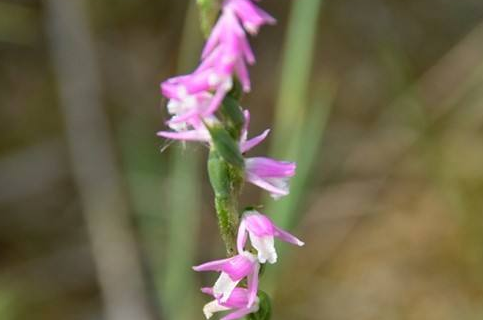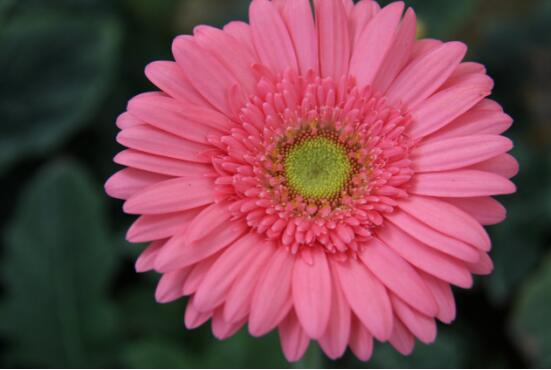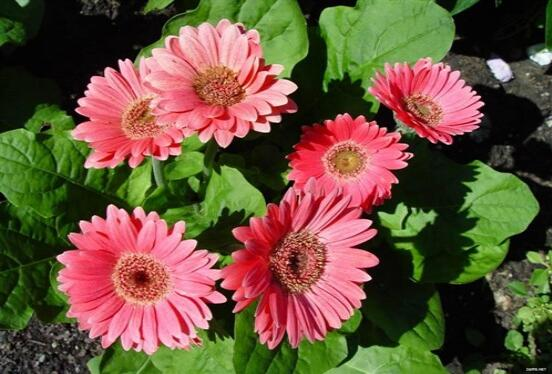Maintenance methods of Stripe Grass
1. Soil
Shou grass is an orchid plant, fleshy root, need to choose good permeability slightly acidic sandy soil to grow, mixed with humus or peat soil will be more conducive to growth.

two。 Moisture content
The grass needs a lot of water in the peak period of growth. Lack of water in summer will cause poor plant growth, watering should not be too much, too dry, too much watering is easy to make the roots anoxic rot. Plant water demand is small in winter, so watering should be controlled to prevent frostbite.
3. Fertilizer application
Shou grass can choose diluted 10 times farm manure for watering, watering as far as possible not to touch the roots, or touch the leaves, so as not to burn the plant. Be sure to control the concentration of fertilizer, spraying foliar fertilizer is the best way of fertilization, foliar fertilizer is applied every 10 days during the peak growth period.
Now we all know that Shou Cao is not an ordinary plant. Shou Cao is still the smallest orchid in the world, just like a lovely elf. I hope you can like it.
Maintenance methods and matters needing attention of Stripe Grass
Soil selection of Stripe Grass
Shoucao is a kind of orchid plant, which has fleshy roots like other orchid plants, so it is necessary to choose sandy soil with good permeability and slightly acidic iron, and it is better to mix with mountain soil rich in humus or peat soil.
Water supply of Stripe Grass
Shrimp grass needs more water in the peak growth period, and special attention should be paid to water control in summer and winter. In summer, once the lack of water will be poor growth, water should be in line with the "dry, wet stop, appropriate dry" principle, too much watering can easily lead to anoxic rotting roots. Watering is generally in the early morning or evening, can not be watered at noon, because the water temperature rises quickly after watering at noon, it is easy to burn plants. Attention should be paid to water control in winter, because when the temperature is low, the metabolism of plants is weak and less water is needed to prevent freezing and frostbite of the roots in the basin soil.
Fertilization measures of Stripe Grass
Shou grass fertilization can choose diluted 10 times farm manure for irrigation, irrigation as far as possible along the edge of the basin irrigation, do not touch the roots, do not touch the leaves, to avoid burning plants. When applying chemical fertilizer, attention should be paid to balancing the proportion of nitrogen, phosphorus and potassium, and the concentration must be strictly controlled. Spraying foliar fertilizer can not only absorb and supplement plant nutrition through leaves, but also avoid fertilizer damage caused by fertilizer contacting the roots directly. this is the best way to apply fertilizer. In the peak growth period, foliar fertilizer is sprayed once in about 10 days, and there is no need to apply fertilizer to the basin to raise the grass. Fertilizer should pay attention to apply sparsely, eat less and eat more.
Culture methods and matters needing attention of Shoucao
Latin name Spiranthes sinensis (Pers.) Ames
The plant kingdom.
Phylum angiosperm
Monocotyledon class
Coleoptera
Kolanco
Subfamily Acoraninae
The orchid people in the bird's nest
The genus Scutellaria
Grow shrub grass
Named by and Age Ames, 1908
Spiranthes sinensis (Pers.) Ames): the plant is 13-30 cm high. Roots several, fingerlike, fleshy, clustered at base of stem. The stem is short, with 2-5 leaves near the basal part. Leaf blade broadly linear or broadly linear-lanceolate, rarely narrowly oblong, erect. Flowering stems erect, 10-25 cm long, distally glandular pilose to glabrous; racemes with numerous dense flowers, 4-10 cm long, spirally twisted; flowers small, purplish, pink or white, spirally arranged on inflorescence axis; lower sepals connivent, middle sepals narrowly oblong, navicular, 4 mm long, 1.5 mm wide, apex slightly acute, cucullate with petals. The florescence is from July to August. Born under forests, thickets, grasslands or marsh meadows on hillsides at an altitude of 200-3400 m. It is also distributed in China, Russia, Mongolia, Korean Peninsula, Japan, Afghanistan, Kashmir to Bhutan, India, Myanmar, Vietnam, Thailand, Philippines, Malaysia and Australia. This kind is cultivated, and the whole grass is used as medicine.
1. Morphological characteristics.
The plant is 13-30 cm tall. Roots several, fingerlike, fleshy, clustered at base of stem. The stem is short, with 2-5 leaves near the basal part. Leaf blade broadly linear or broadly linear-lanceolate, rarely narrowly oblong, erect, 3-10 cm long, often 5-10 mm wide, apex acute or acuminate, base narrowly clasped sheath. Flowering stems erect, 10-25 cm long, glandular pilose to glabrous distally; racemes with numerous dense flowers, 4-10 cm long, spirally twisted; floral bracts ovate-lanceolate, apex long acuminate, lower ones longer than ovary; ovary fusiform, torsional, glandular pilose, pedicels 4-5 mm long; flowers small, purplish, pink or white, spirally arranged on inflorescence axis Lower sepals connivent, middle sepals narrowly oblong, navicular, 4 mm long, 1.5 mm wide, apex slightly acute, cucullate with petals; lateral sepals oblique, lanceolate, 5 mm long, ca. 2 mm wide, apex slightly acute.
Petals obliquely rhomboid-oblong, apex obtuse, as long as middle sepals but thinner; labellum broadly oblong, impressed, 4 mm long and 2.5 mm wide, apex extremely obtuse, upper part hirsute and margin strongly wrinkled rodent, lip base sunken into a shallow sac, with 2 corpus callosum in the sac. The florescence is from July to August.
This kind of plant is widely distributed, and its size, leaf shape, color of flowers and hairs on the upper part of the flower stem often vary greatly due to different distribution areas.
2. Habitat of origin
Born under forests, thickets, grasslands or marsh meadows on hillsides at an altitude of 200-3400 m. Produced in all provinces and regions of China, Russia (Siberia), Mongolia, Korean Peninsula, Japan, Afghanistan, Kashmir to Bhutan, India, Myanmar, Vietnam, Thailand, Philippines, Malaysia, Australia. The type specimens were collected from Guangdong, China.
3. Growth habits
Orchids generally grow on the hillside and valley walls of deep mountain valleys, sloping slopes or stone gaps with good water permeability and water retention, next to sparse mountain grass, and shaded by secondary trees. Or a place with shade, short sunshine or only scattered stars. Places with high humidity and good air circulation are sometimes born on the cliffs of mountains and streams. Orchids should be planted in a ventilated environment. Sex likes yin, avoid direct sunlight, like moist, avoid dryness, 15 ℃ to 30 ℃ is the most suitable for growth. The growth was poor above 35 ℃. The severe cold below 5 ℃ will affect its growth, at this time, orchids are often in a dormant state. If the temperature is too high and the sun is exposed, the leaves will burn or scorch within a day or two. If the temperature is too low and it is not transferred into the house in time, frostbite will occur.
Orchid is a fleshy root, suitable for the use of sandy loam rich in humus, drainage performance must be good, humus soil or mountain soil with more humus should be selected. The pH value of slightly acidic loose soil or iron-containing soil should be 5.5-6.5.
- Prev

one。 Culture methods of African Chrysanthemum
1. Temperature management must control the ambient temperature for the growth of African chrysanthemum. The indoor temperature had better be controlled between 15 and 25 degrees, which must not exceed 30 degrees. If it exceeds 30 degrees, African chrysanthemum may die. And at the same time, we should also do a good job in ventilation and strengthen the circulation of air.
- Next

two。 Propagation methods of African Chrysanthemum
1. The sowing method usually produces 20 or 30 seeds per flower, which can be sown in spring or autumn. Spring sowing usually takes place in March and May, while autumn sowing takes place in September and October of the year. Sowing should be carried out immediately after the seed is ripe, thinking that the life span of the seed is relatively short.
Related
- Fuxing push coffee new agricultural production and marketing class: lack of small-scale processing plants
- Jujube rice field leisure farm deep ploughing Yilan for five years to create a space for organic food and play
- Nongyu Farm-A trial of organic papaya for brave women with advanced technology
- Four points for attention in the prevention and control of diseases and insect pests of edible fungi
- How to add nutrient solution to Edible Fungi
- Is there any good way to control edible fungus mites?
- Open Inoculation Technology of Edible Fungi
- Is there any clever way to use fertilizer for edible fungus in winter?
- What agents are used to kill the pathogens of edible fungi in the mushroom shed?
- Rapid drying of Edible Fungi

